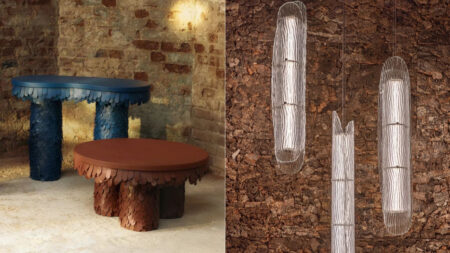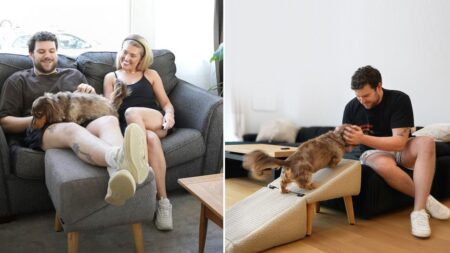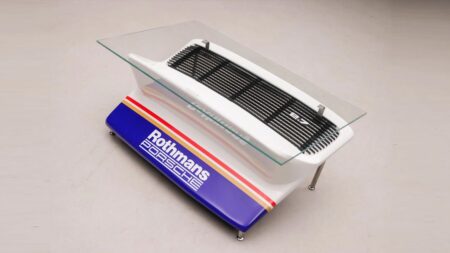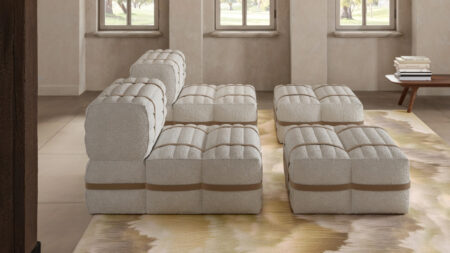Founded with the aim to find ways to devise a relationship between nature and technology, London-based Blast Studio has turned to 3D printing technology. In continuation of its mission, the studio is transforming urban waste into a 3D-printed biomaterial. Basically, they have developed a method for 3D printing with living organisms and used it to form structural columns and even furniture.
The design firm came into the limelight after building a structural building column that can also serve as a medium to harvest mushrooms. Living organisms such as mycelium are combined with waste before printing the items. It grows on the column, creating a layer of unique light material with a velvety texture and a cream/brown color while producing mushrooms for consumption.
The studio has also created 3D-printed furniture from eco-friendly biomaterial. The Tree Tables are the best examples of what the studio aims at. This collection of tables is 3D printed from used coffee cups and cardboard collected in London. The shapes of the tables are created using a specialized algorithm that takes inspiration from the trunks and stems of trees.
The idea is to craft rugged surfaces with pockets that provide warmth and humidity to help mycelium grow to its fullest. Once the mycelium and waste material are printed into shape, the mycelium feeds on the waste and grows to take over the entire structure, popping up mushrooms that can be picked and eaten. The final look is completed with a glass top that wittily showcases the rough beauty of the 3D printed base.
Also Read: 15 Stunning 3D Printed Chairs For Future Homes
Made to order, these 3D printed Tree Tables can be termed sculptural art pieces, owing to the amazing base. There is even an option to choose the dimensions, colors, and proportions of the design.





Follow Homecrux on Google News!




